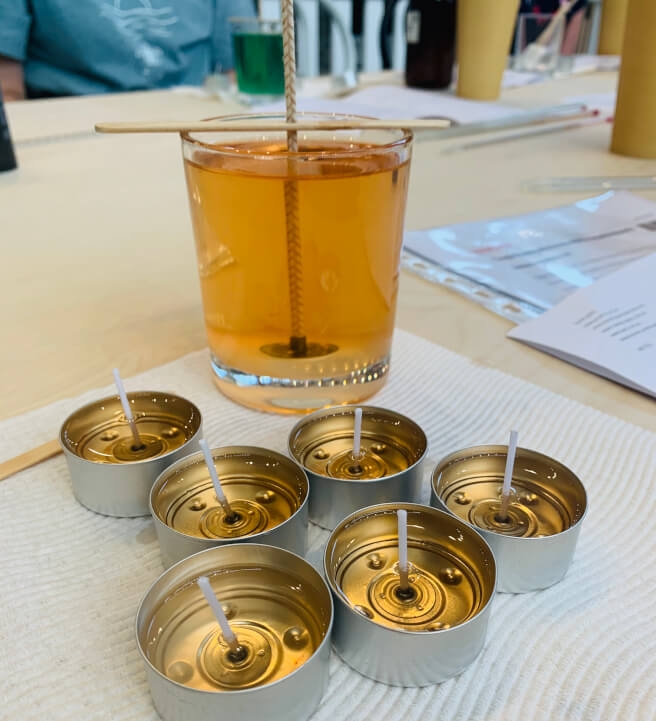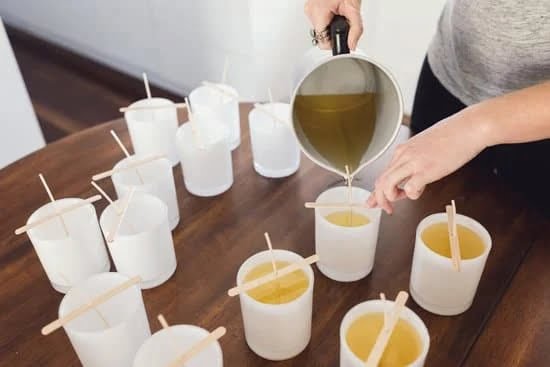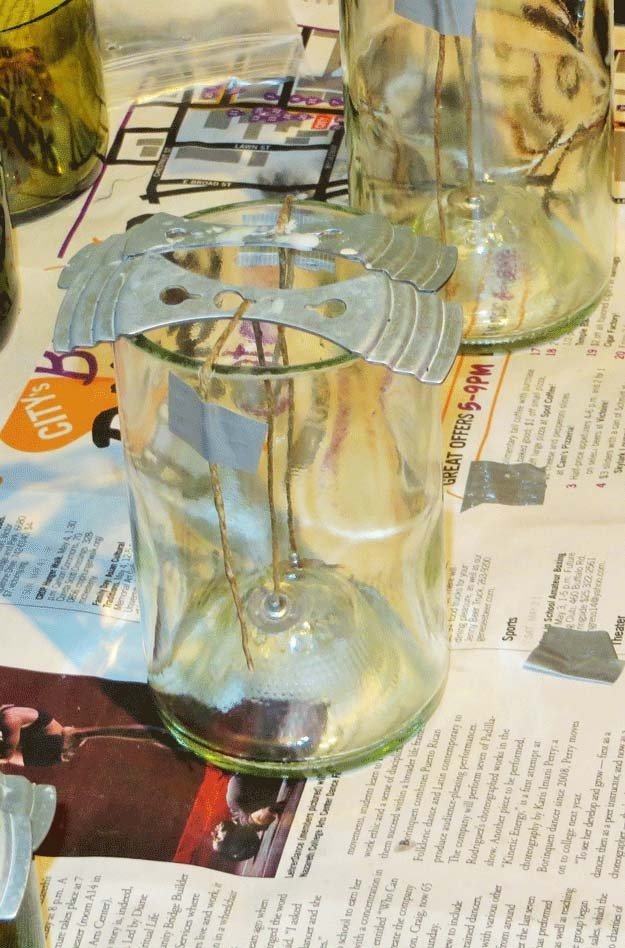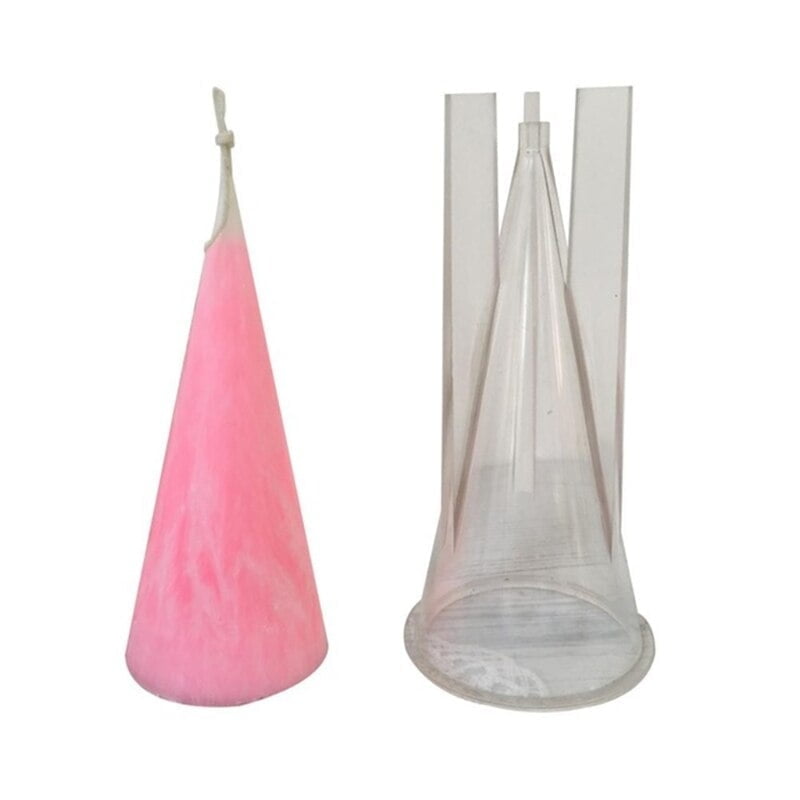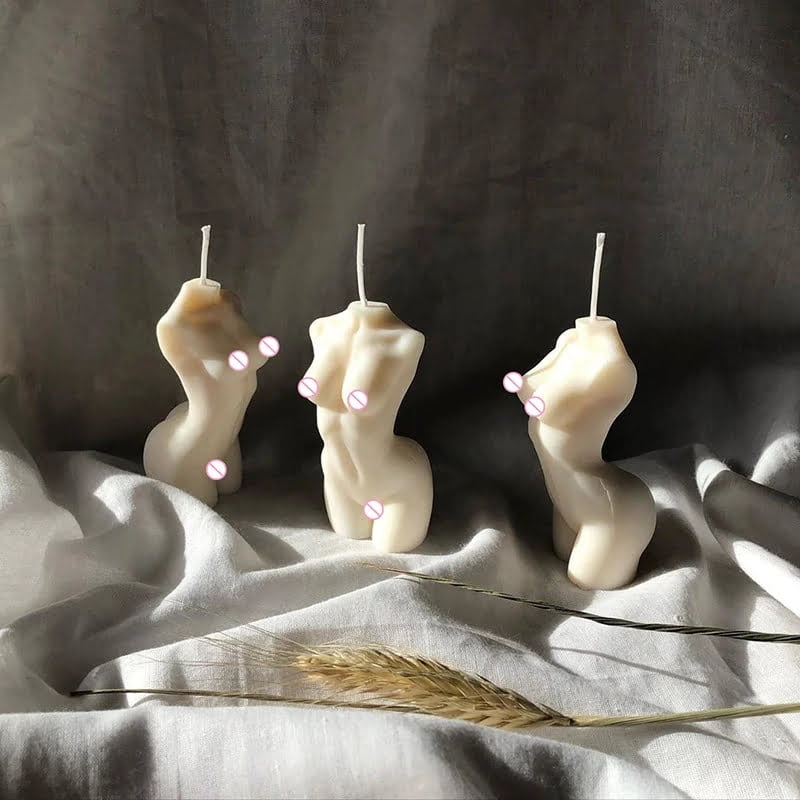Fragrance oils play a crucial role in candle making, as they not only add a wonderful aroma to your candles but also enhance the overall sensory experience. If you’re looking to elevate your candle-making craft, learning how to make your own fragrance oil is a rewarding and customizable process. By exploring different scents and base oils, you can create unique combinations that truly represent your personal style and preferences.
Quality fragrance oils are essential for achieving long-lasting and consistent scents in your candles. Understanding the difference between essential oils and fragrance oils, along with their respective pros and cons, can help you make informed choices when creating your own blends. Additionally, choosing the right base oil for your fragrance is crucial as it serves as the carrier for the scent and can impact its intensity and longevity.
In this article, we will delve into the art of crafting personalized fragrance oils for candle making. From selecting the perfect base oil to blending various scents harmoniously, we will provide a step-by-step guide on how to create your own fragrance oil.
Discover valuable tips for successful scent combinations, learn how to test and adjust your homemade fragrance oil, and explore creative ways to store, preserve, package, and label your DIY creations. Join us on this aromatic journey towards creating delightful candles infused with your signature scent.
Understanding the Importance of Quality Fragrance Oils
When it comes to candle making, the quality of fragrance oils used can make a significant difference in the final product. Quality fragrance oils are essential for creating candles that not only smell amazing but also have a longer-lasting scent throw.
Using subpar or low-quality fragrance oils can result in candles that do not emit the desired aroma or lose their scent quickly. Therefore, understanding the importance of quality fragrance oils is crucial for any candle maker looking to create high-quality products.
Ensuring Long-Lasting Scents
One of the key reasons why quality fragrance oils are important in candle making is their ability to provide long-lasting scents. High-quality oils are formulated to be strong and concentrated, ensuring that the scent will be robust and will fill a room when the candle is burned.
Cheaper oils may not have the same potency, resulting in candles that do not emit a noticeable scent or that lose their fragrance quickly. By investing in quality fragrance oils, candle makers can ensure that their creations will maintain their scent throughout the entire burn time.
Avoiding Irritants and Allergens
Another important aspect of using quality fragrance oils is ensuring that they are safe for use in candles. Poor-quality oils may contain irritants or allergens that can be harmful when burned, leading to unpleasant experiences for those sensitive to certain ingredients.
High-quality fragrance oils are typically made with safe and skin-friendly ingredients, reducing the risk of adverse reactions when used in candles. This is especially important for candle makers looking to sell their products, as using quality oils can help them avoid potential complaints or legal issues related to sensitivities or allergies.
Essential Oils vs Fragrance Oils
When it comes to creating your own fragrance oils for candle making, one of the most important decisions you’ll have to make is whether to use essential oils or fragrance oils. Each type of oil has its own set of pros and cons that can influence the overall quality and scent of your candles.
Essential oils are derived from natural sources such as plants, flowers, and fruits. They are known for their therapeutic properties and often provide a more subtle and natural scent compared to synthetic fragrance oils. However, essential oils can be more costly than fragrance oils and may have a shorter shelf life due to their organic nature.
On the other hand, fragrance oils are synthetic oils that are specifically formulated to replicate various scents. They offer a wider range of fragrances to choose from and tend to be more affordable than essential oils. However, some fragrance oils may contain artificial ingredients that could trigger allergies or irritate sensitive skin.
When deciding between essential oils and fragrance oils for your homemade fragrance oil blend, consider the desired scent profile and potential sensitivities of your intended audience. Experiment with different combinations of essential and fragrance oils to find the perfect balance for your candles. By understanding the pros and cons of each type of oil, you can create personalized fragrances that will enhance the ambiance of any space.
Choosing the Right Base Oil for Your Fragrance
When it comes to creating your own fragrance oil for candle making, one of the key considerations is choosing the right base oil. The base oil serves as the carrier for the fragrance and helps disperse the scent evenly when added to wax. It is essential to select a base oil that is both neutral in odor and has good stability to ensure that it does not interfere with the desired fragrance notes or degrade over time.
Types of Base Oils
There are various types of base oils that can be used when making fragrance oils for candles. Some popular options include fractionated coconut oil, sweet almond oil, jojoba oil, and grapeseed oil. Each type of base oil has its own unique characteristics, such as viscosity, absorbency, and shelf life, which can affect the overall performance of the fragrance oil in your candles.
Considerations for Choosing a Base Oil
When selecting a base oil for your homemade fragrance oil, consider factors such as the intended use of the candle, personal preferences on texture and absorption rate, and any potential allergies or sensitivities to specific oils. It is also important to test different base oils with your chosen fragrances to determine which combination yields the best results in terms of scent throw, longevity, and overall performance.
Experimenting with different base oils can help you create custom fragrance blends that suit your individual style and preferences.
Tips for Creating Custom Blends
To enhance the quality of your homemade fragrance oils for candle making, consider blending two or more base oils together to create a unique combination that complements your chosen scents. For example, combining fractionated coconut oil with jojoba oil can result in a lightweight yet moisturizing blend that carries both light and heavy fragrances effectively.
Additionally, incorporating a small amount of vitamin E oil into your base mixture can help prolong the shelf life of your fragrance oils by acting as a natural preservative. Experimenting with different ratios and combinations of base oils can help you achieve optimal results in creating personalized fragrances for your candles.
Step-by-Step Guide on How to Create Your Own Fragrance Oil
Creating your own fragrance oil for candle making can be a rewarding and enjoyable process. By crafting your unique scents, you can personalize your candles and create a signature aroma that sets your creations apart from others. Here is a step-by-step guide on how to make your own fragrance oil for candle making:
1. Gather Your Materials: Before you begin, make sure you have all the necessary ingredients and tools. You will need essential oils or fragrance oils, a base oil or carrier oil, measuring spoons, glass dropper bottles for storing the final product, and a notebook to record your recipes.
2. Choose Your Scents: Decide on the combination of fragrances you would like to create for your candle. You can mix different essential oils or fragrance oils to achieve a unique scent profile. Consider blending floral notes with citrus or woodsy aromas for a well-rounded fragrance.
3. Mixing Your Fragrance Oil: In a clean glass container, combine the desired amount of essential oils or fragrance oils with the base oil using the recommended ratio (typically 10-30% essential oils to 70-90% base oil). Use a dropper to carefully measure and add each ingredient, then stir gently to blend them together.
4. Adjusting the Scent: After mixing your initial batch of fragrance oil, take note of how it smells. You can adjust the proportions of each scent if needed to achieve the desired balance. Keep in mind that certain fragrances may become stronger or more prominent over time, so allow the blend to rest for at least 24 hours before making any final adjustments.
By following these steps, you can experiment with different combinations of scents and create custom fragrance oils that reflect your personal taste and style. Enjoy the process of crafting unique aromas for your candles and immerse yourself in the art of homemade fragrance creation.
Tips for Blending Different Scents Successfully
When it comes to creating your own fragrance oil for candle making, blending different scents successfully is a crucial step to achieve a harmonious and pleasing aroma. Mixing various fragrances can be both fun and challenging, but with the right techniques and knowledge, you can create unique and personalized scents that will set your candles apart. Here are some tips to help you blend different scents successfully for your DIY fragrance oils:
- Start with a Clear Vision: Before diving into blending different scents, have a clear idea of the type of fragrance you want to create. Consider the mood or atmosphere you want to evoke with your candle, whether it’s relaxing, invigorating, or comforting.
- Consider Fragrance Families: Familiarize yourself with different fragrance families such as floral, citrus, woody, or oriental. Understanding these categories will help you choose complementary scents that work well together.
- Use a Scent Wheel: A scent wheel can be a helpful tool in visualizing how different fragrances relate to each other. It can guide you in selecting scents that are close on the wheel for harmonious blends or opposite for more complex combinations.
Remember that experimenting with blending scents is part of the creative process, so don’t be afraid to try out different combinations until you find one that resonates with you. With practice and experience, you’ll develop an intuition for what works well together and create signature fragrances that reflect your personal style.
- Avoid Overwhelming Scents: When blending different fragrances, start with small amounts of each scent and gradually increase based on your preference. Too many strong scents layered together can result in an overpowering aroma.
- Balance Your Notes: Consider incorporating top notes (first impression), middle notes (heart of the scent), and base notes (linger after burning) in your fragrance blend for depth and complexity.
- Document Your Recipes: Keep track of the blend ratios and components used in creating each fragrance oil so that you can replicate successful combinations or make adjustments as needed in the future.
By following these tips and being open to experimentation, you’ll be able to master the art of blending different scents successfully and craft exquisite fragrance oils for your candle making endeavors.
Testing and Adjusting Your Homemade Fragrance Oil
When it comes to making your own fragrance oil for candle making, testing and adjusting your homemade blends is a crucial step in ensuring the right scent profile for your candles. Even if you follow a recipe or create your own blend, it’s essential to test the fragrance oil in a small batch of candles before committing to a larger production.
This will help you see how the scent develops when burned and whether any adjustments need to be made.
One way to test your homemade fragrance oil is by creating sample candles with different concentrations of the scent. You can start with a low concentration and gradually increase the amount of fragrance oil in each batch to determine the optimal level for the desired strength of scent. Pay attention not only to the fragrance strength but also to how well the scent throws (i.e. how far it travels when the candle is burning) and how long it lasts.
If you find that your homemade fragrance oil needs some adjustments after testing, don’t be discouraged. Tweaking the blend by adding more base oil or adjusting the ratios of different scents can help fine-tune the overall aroma.
Keep notes on each adjustment you make so that you can replicate successful blends in the future. Remember, experimentation is key when creating personalized fragrance oils for candle making, so don’t be afraid to get creative and trust your sense of smell.
Storing and Preserving Your DIY Fragrance Oil
Creating your own fragrance oil for candle making is a rewarding and creative process that allows you to customize scents according to your preferences. Once you have crafted your signature fragrance oil, it is essential to store and preserve it properly to maintain its quality over time. Improper storage can lead to the degradation of the fragrance, affecting the final scent of your candles.
To store your DIY fragrance oils effectively, it is recommended to use dark-colored glass bottles with tight-sealing caps. Amber or cobalt blue bottles are ideal for preserving the integrity of the oil by protecting it from light exposure. Light can break down the compounds in the fragrance oil, leading to a loss of scent potency and quality. Additionally, glass containers are preferable as they do not interact with the oil compared to plastic containers.
When storing your homemade fragrance oils, ensure that they are kept in a cool, dark place away from direct sunlight and heat sources. Exposure to heat can accelerate the oxidation process of the oils, causing them to go rancid more quickly. By maintaining a consistent temperature and keeping the oils in a stable environment, you can prolong their shelf life and preserve their aromatic properties effectively.
It is also advisable to label your stored fragrance oils with detailed information such as creation date, ingredients used, and any special notes about the scent profile. This will not only help you keep track of each blend but also allow you to make adjustments or recreate specific fragrances in the future. Properly stored and labeled DIY fragrance oils will ensure that you have a supply of high-quality scents ready for your candle making projects at any time.
| Storage Tips | Benefits |
|---|---|
| Use dark-colored glass bottles | Protects oil from light exposure |
| Store in a cool, dark place | Avoids heat exposure and oxidation |
| Label bottles with creation date and ingredients | Helps track blends and make adjustments |
Creative Ways to Package and Label Your Fragrance Oils for Candle Making
Creating your own fragrance oil for candle making is a fun and rewarding process, and once you have perfected your unique scent blend, it’s time to think about packaging and labeling. The way you present your DIY fragrance oil can add a special touch to your candles and make them more appealing to customers if you plan on selling them. Here are some creative ways to package and label your fragrance oils for candle making:
One popular option for packaging homemade fragrance oils is to use amber glass dropper bottles. These bottles not only protect the integrity of the oil by blocking out light, but they also give a luxurious and professional look to your product. You can further customize these bottles by adding personalized labels with the name of the fragrance, ingredients used, and any other relevant information.
If you prefer a more eco-friendly approach, consider using recyclable or biodegradable materials for packaging. For example, you can use small mason jars or tin containers to store your fragrance oils. To add a personal touch, decorate the jars with ribbons, twine, or custom stickers that reflect the theme of the scent you have created.
When it comes to labeling your fragrance oils, be sure to include important details such as the name of the scent, date of creation, base oil used, and any precautions or warnings. You can get creative with fonts and colors to make your labels visually appealing. Additionally, consider adding a brief description of the scent profile to give customers an idea of what to expect when using your fragrant oil in their candles.
| Packaging Option | Customization Ideas |
|---|---|
| Amber Glass Dropper Bottles | Personalized labels with name of fragrance ingredients used. |
| Recyclable Materials (such as mason jars) | Ribbons, twine or custom stickers for decoration. |
Conclusion
In conclusion, learning how to make your own fragrance oil for candle making can truly be a rewarding and fulfilling experience. By understanding the importance of quality fragrance oils and the advantages of using essential oils versus fragrance oils, you can create unique scents that cater to your personal preferences and needs. Choosing the right base oil is essential in ensuring that your homemade fragrance oil blends well and produces a long-lasting scent when used in candles.
Following a step-by-step guide on creating your own fragrance oil, along with tips for successfully blending different scents, will help you craft personalized fragrances that are both enjoyable and memorable. Testing and adjusting your DIY fragrance oil is crucial in refining the scent to perfection before using it in candle making. By storing and preserving your homemade fragrance oil properly, you can ensure its longevity and maintain its aromatic properties for future use.
Embracing the art of crafting personalized fragrance oils for candle making allows you to unleash your creativity and experiment with various combinations of scents. Whether it’s for personal use or as gifts for loved ones, packaging and labeling your DIY fragrance oils in creative ways adds an extra touch of thoughtfulness to each candle-making project. So why not start exploring the world of creating your own fragrance oils today and see where your olfactory journey takes you?
Frequently Asked Questions
Can I Make My Own Fragrance Oil for Candles?
Making your own fragrance oil for candles is definitely possible, but it can be a complex process. It involves combining essential oils, extracts, or synthetic fragrance components in a carrier oil to create a unique scent. The key is to experiment with different combinations and proportions to find the perfect balance for your candle-making project.
What Is the Best Carrier Oil for Candles?
When it comes to choosing the best carrier oil for candles, there are several options to consider. Some popular choices include soybean oil, coconut oil, and apricot kernel oil.
Each carrier oil has its own unique characteristics that can affect how well it blends with fragrance oils and how it performs in the candle-making process. Ultimately, the best carrier oil for you will depend on your personal preferences and the specific qualities you want in your finished candles.
How Is Fragrance Oil Made?
Fragrance oil is typically made through a process of distillation or extraction from natural sources such as flowers, fruits, herbs, or spices. Essential oils are often used as a base for creating fragrance oils due to their concentrated aromatic properties. In some cases, synthetic compounds may also be added to enhance or modify the scent profile.
The resulting fragrance oil is then blended with a carrier oil to make it suitable for use in candles or other scented products. Overall, making fragrance oils involves a delicate balance of science and artistry to create appealing and harmonious scents for various applications.

Welcome to my candle making blog! In this blog, I will be sharing my tips and tricks for making candles. I will also be sharing some of my favorite recipes.

